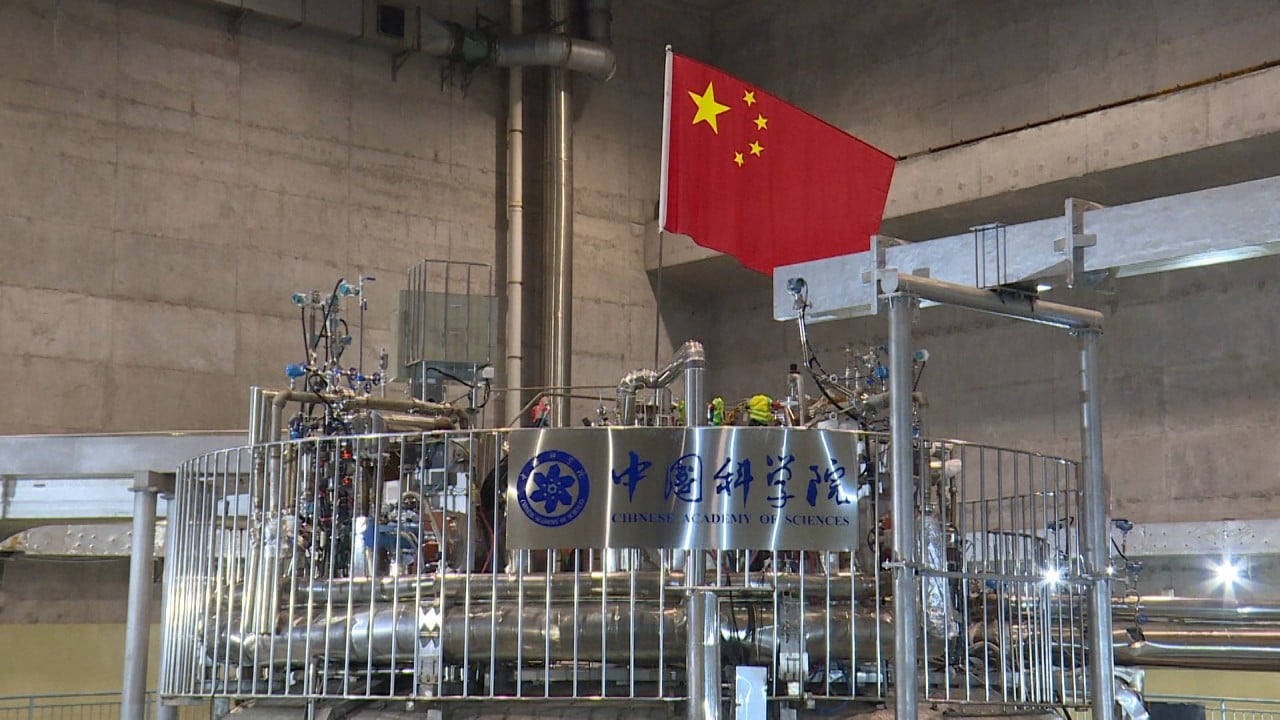
Green or black? China urged to curb coal addiction and recover from coronavirus sustainably
- Carbon emissions were down a quarter during lockdown in February, but back at pre-pandemic levels by late March
- McKinsey report calls on China to ‘show leadership in a new, low-carbon economy’
“Although this transition will be difficult, it also is a time for China to show leadership in a new, low-carbon economy,” it said.
The pandemic has changed the ways people live, work and transport things. With reductions in fossil fuel use, it has also shown the possibility of a transition to low carbon use.

03:31
Coronavirus: blue skies over Chinese cities as Covid-19 lockdown temporarily cuts air pollution
Global energy demand this year is estimated to contract by 6 per cent – the largest ever reduction in absolute terms – because of pandemic control measures, according to a report in April by the International Energy Agency. Global carbon dioxide (CO2) emissions were predicted to decline by 8 per cent in 2020, it said.
In China, carbon emissions were down an estimated 25 per cent for the month of February – the peak of lockdowns in China – but had returned to pre-coronavirus levels by the end of March, according to the Centre for Research on Energy and Clean Air, an independent research organisation based in Finland.
McKinsey’s report estimated that if emissions continued to rise at the current rate, extreme heat and lethal heatwaves could threaten 10 to 45 million people.
The kind of heavy rain that was a once-in-50-years event in 1980 is expected to be two to three times more likely in 2030 and three to six times more in 2050, it added.
China planning 226GW of new coal-fired power projects
The report, Leading the Battle Against Climate Change: Actions for China, suggested that the Chinese government adopt measures to mitigate climate change, adapt the country to take account of climate risks and support global sustainable economic development.
Specifically, emissions could be reduced by improving energy efficiency, transforming power systems and ramping up electrification in transport, building and industry, scaling up the carbon-management industry and managing non-CO2 emissions, it said.
“China can nurture competitive industries and technologies in its own mitigation responses, such as clean fuel technologies, carbon capture, use and storage, batteries and electricity storage,” said Haimeng Zhang, a senior partner at McKinsey.

01:20
China building a new mega hydro dam at Dateng Gorge in southern Guangxi
In the first five months of 2020, China moved ahead with an additional 48 gigawatts (GW) of coal-fired power plants, which is 1.6 times the installed capacity in 2019, according to calculations from Greenpeace. This was on top of the 46GW of plants already in the pipeline.
Among the 48GW worth of projects, 22.4GW was in the planning stages, 11.4GW had been approved and 14.7GW was under construction.
In May, China unveiled a new development plan to seek growth in its vast and energy-rich western regions. In the plan, it encouraged fossil fuel production in the region, by promoting coal-related industry development and building oil gas production bases and storage facilities.
“One thing that worries us is the building of coal power plants,” Li Shuo, senior global policy adviser at Greenpeace East Asia, said.
China planning 226GW of new coal-fired power projects
“With many economic recovery policies aimed at increasing employment, resuming production or helping the vulnerable, you can’t say they are black or green,” he said. “But currently in China, it’s obvious that economic recovery through infrastructure investment in fossil fuels is black.”
Yang Fuqiang, a senior adviser on climate change and energy policy in Beijing for the Natural Resources Defence Council, said China had continued its reliance on coal.
However, Yang said that in the country’s new infrastructure investment plan – the initiative promoted in March to boost industrial upgrading and stimulating the economy – some of the projects were low-carbon, such as 5G applications and smart charging piles for electric vehicles.

01:03
Chinese scientists experiment with gaining limitless clean energy through fusion reactions
“China is changing its energy consumption model to improve the environment and curb CO2 emissions – for example, by promoting electrification in the transport sector,” he said.
Early this month, Liu Youbin, spokesman for the Ministry of Ecology and Environment, said at a press conference that China would fully implement its commitment to nationally determined contributions on climate change under the Paris agreement, despite the coronavirus outbreak.
In April, experts at World Resources Institute, a Washington-based environmental NGO, had urged China to plug concrete low-carbon development plans into its stimulus package. They suggested four investments – including investing in electric vehicle charging infrastructure and developing renewable energy – that they said could help turn the post-coronavirus recovery into a turning point for a better future for China.
Globally, many city leaders, companies, health professionals and organisations have called for a green recovery and placing climate resilience at the forefront.
Week in review: China’s business (and smog) comes back
In a statement published in April, government representatives from over 30 cities, including Hong Kong, London, New York and Seoul, agreed to coordinate efforts to plan towards a low-carbon sustainable rebuilding process after the coronavirus crisis.
In May, 155 multinational companies, representing a combined market capitalisation of over US$2.4 trillion and five million employees, signed a statement calling for world leaders to rebuild from the pandemic with climate-resilient policies.
As of June 9, more than 700 companies globally had signed open letters to world leaders, calling on them to ensure that economic stimulus packages tackled both the impact of the coronavirus and the ongoing climate crisis, Maria Mendiluce, chief executive of US-based non-profit coalition We Mean Business, wrote on the website of the World Economic Forum.
Experts have also called for levying or increasing carbon taxes after a collapse in oil prices triggered by a shortage of crude storage during the pandemic. They argued that it presented an excellent opportunity to advance climate policies.
China’s smog-prone areas see clearer skies but pollution worse elsewhere
“Such a levy would blunt the negative impact of these extremely low prices on the competitiveness of renewables, thus making a climate-friendly recovery easier to achieve,” Kemal Derviş and Sebastian Strauss, of Washington research group Brookings Institution, wrote last month in a commentary on analysis website Project Syndicate.
Unchecked, global environmental emergencies such as climate change and biodiversity loss could cause social and economic damage far larger than that caused by Covid-19, intergovernmental body the Organisation for Economic Co-operation and Development said in a report published this month.
“To avoid this, economic recovery packages should be designed to ‘build back better’,” it said.

